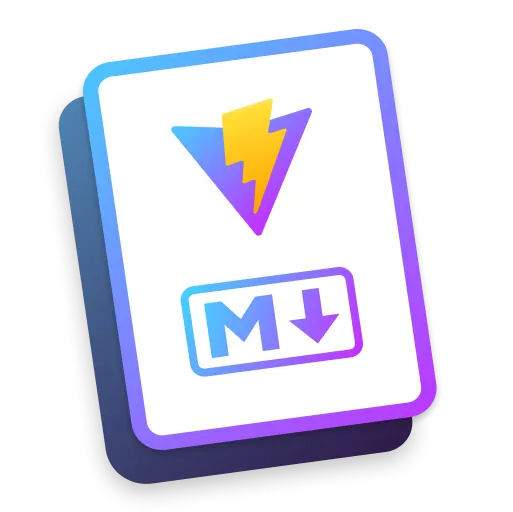前言
组件允许我们将 UI 划分为独立的、可重用的部分,并且可以对每个部分进行单独的思考
在实际应用中,组件常常被组织成层层嵌套的树状结构
定义一个组件
一般将 Vue 组件定义在单独的 .vue,这被叫做单文件组件 (简称 SFC)
<template>
<button @click="count++">You clicked me {{ count }} times.</button>
</template>
<script setup>
import { ref } from 'vue'
const count = ref(0)
</script>使用组件
要使用一个子组件,我们需要在父组件中导入它,这个组件将会以默认导出的形式被暴露给外部
setup 不需要注册组件
<template>
<h1>Here is a child component!</h1>
<ButtonCounter />
</template>
<script setup>
import ButtonCounter from './ButtonCounter.vue'
</script>选项式
<script>
import ButtonCounter from './ButtonCounter.vue'
export default {
components: {
ButtonCounter//注册
}
}
</script>
<template>
<h1>Here is a child component!</h1>
<ButtonCounter />
</template>组件可以被重用任意多次,每一个组件都维护着自己的状态,这是因为每当你使用一个组件,就创建了一个新的实例。
传递 props
如果我们正在构建一个博客,我们可能需要一个表示博客文章的组件。我们希望所有的博客文章分享相同的视觉布局,但有不同的内容。要实现这样的效果自然必须向组件中传递数据,例如每篇文章标题和内容,这就会使用到 props。
Props 是一种特别的 attributes,你可以在组件上声明注册。要传递给博客文章组件一个标题,我们必须在组件的 props 列表上声明它。这里要用到 defineProps 宏:
<!-- BlogPost.vue -->
<script setup>
defineProps(['title'])
</script>
<template>
<h4>{{ title }}</h4>
</template>defineProps 是一个仅 <script setup> 中可用的编译宏命令,并不需要显式地导入。声明的 props 会自动暴露给模板。defineProps 会返回一个对象,其中包含了可以传递给组件的所有 props:
const props = defineProps(["title"]);
console.log(props.title);如果你没有使用 <script setup>,props 必须以 props 选项的方式声明,props 对象会作为 setup() 函数的第一个参数被传入:
export default {
props: ["title"],
setup(props) {
console.log(props.title);
},
};一个组件可以有任意多的 props,默认情况下,所有 prop 都接受任意类型的值。
<script setup>
import { ref } from 'vue'
import BlogPost from './BlogPost.vue'
const posts = ref([
{ id: 1, title: 'My journey with Vue' },
{ id: 2, title: 'Blogging with Vue' },
{ id: 3, title: 'Why Vue is so fun' }
])
</script>
<template>
<BlogPost
v-for="post in posts"
:key="post.id"
:title="post.title"
></BlogPost>
</template>选项式
<script>
export default {
props: ['title']
}
</script>
<template>
<h4>{{ title }}</h4>
</template>监听事件
让我们继续关注我们的 <BlogPost> 组件。我们会发现有时候它需要与父组件进行交互。例如,要在此处实现无障碍访问的需求,将博客文章的文字能够放大,而页面的其余部分仍使用默认字号。
在父组件中,我们可以添加一个 postFontSize ref 来实现这个效果
给 <BlogPost> 组件添加一个按钮:
<script setup>
defineProps(['title'])
defineEmits(['enlarge-text']) //声明需要抛出的事件
</script>
<template>
<h4>{{ title }}</h4>
<button @click="$emit('enlarge-text')">Enlarge text</button>
</template>父组件可以通过 v-on 或 @ 来选择性地监听子组件上抛的事件,就像监听原生 DOM 事件那样
<script setup>
import { ref } from 'vue'
import BlogPost from './BlogPost.vue'
const postFontSize = ref(1)
</script>
<template>
<div :style="{ fontSize: postFontSize + 'em' }">
<BlogPost title="My journey with Vue" @enlarge-text="postFontSize += 0.1"></BlogPost>
</div>
</template>子组件可以通过调用内置的 $emit 方法,通过传入事件名称来抛出一个事件
因为有了 @enlarge-text="postFontSize += 0.1" 的监听,父组件会接收这一事件,从而更新 postFontSize 的值
这声明了一个组件可能触发的所有事件,还可以对事件的参数进行验证。同时,这还可以让 Vue 避免将它们作为原生事件监听器隐式地应用于子组件的根元素。
和 defineProps 类似,defineEmits 仅可用于 <script setup> 之中,并且不需要导入,它返回一个等同于 $emit 方法的 emit 函数。它可以被用于在组件的 <script setup> 中抛出事件,因为此处无法直接访问 $emit:
<script setup>
const emit = defineEmits(['enlarge-text']) emit('enlarge-text')
</script>如果你没有在使用 <script setup>,你可以通过 emits 选项定义组件会抛出的事件。你可以从 setup() 函数的第二个参数,即 setup 上下文对象上访问到 emit 函数:
export default {
emits: ["enlarge-text"],
setup(props, ctx) {
ctx.emit("enlarge-text");
},
};通过插槽来分配内容
我们希望能和 HTML 元素一样向组件中传递内容
<AlertBox>Something bad happened.</AlertBox>这可以通过 Vue 的自定义 <slot> 元素来实现
<!-- AlertBox.vue -->
<template>
<div class="alert-box">
<strong>This is an Error for Demo Purposes</strong>
<slot />
</div>
</template>动态组件
有些场景会需要在两个组件间来回切换,比如 Tab 界面:
上面的例子是通过 Vue 的 <component> 元素和特殊的 is attribute 实现的:
<!-- currentTab 改变时组件也改变 -->
<component :is="tabs[currentTab]"></component>在上面的例子中,被传给 :is 的值可以是以下几种:
- 被注册的组件名
- 导入的组件对象
你也可以使用 is attribute 来创建一般的 HTML 元素。
当使用 <component :is="..."> 来在多个组件间作切换时,被切换掉的组件会被卸载。我们可以通过 KeepAlive 标签强制被切换掉的组件仍然保持“存活”的状态。
